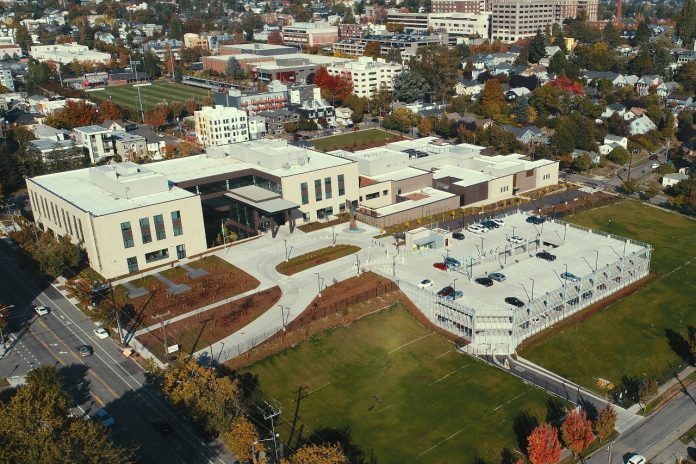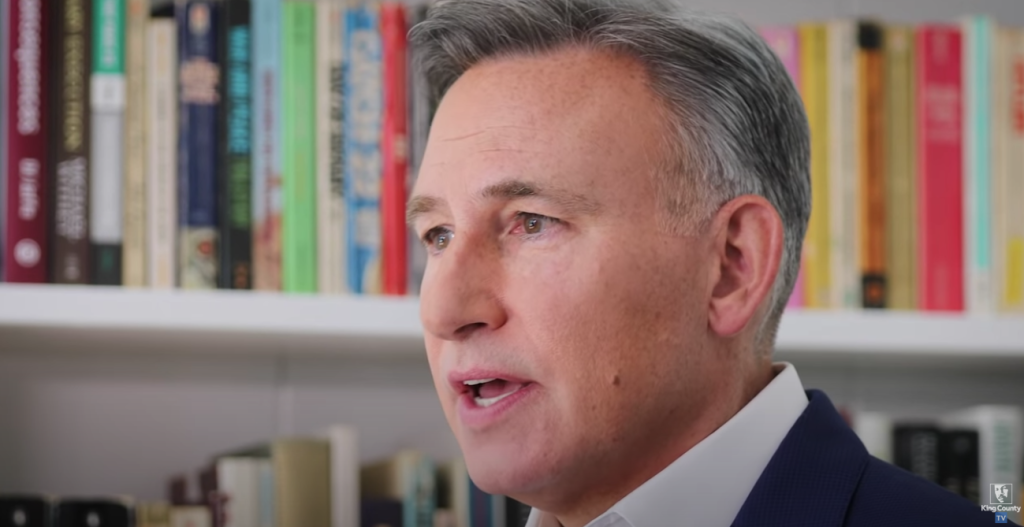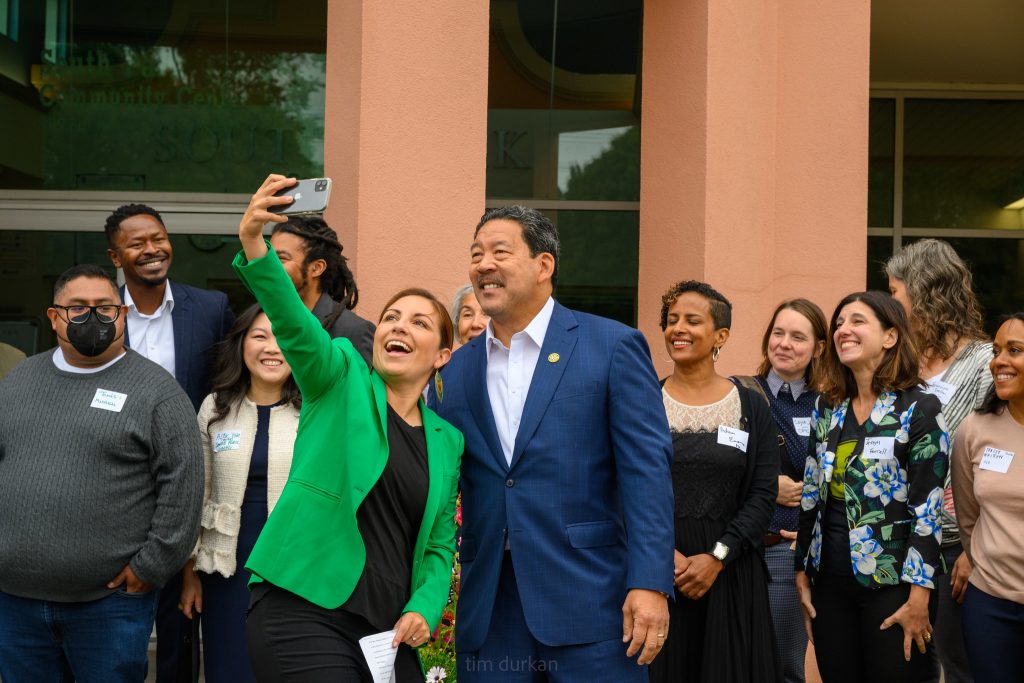
King County will not achieve its stated goal of closing its youth jail, the Judge Patricia H. Clark Children and Family Justice Center, by 2025, Executive Dow Constantine announced last week. The Care & Closure Advisory Committee released their recommendations for community-based alternatives to youth incarceration, and the report acknowledges that implementation will take until 2028 at the earliest.
Constantine made the original pledge to close the youth jail no later than 2025 back in 2020 during the George Floyd protests. On the platform formerly known as Twitter, he said at the time, “Today I commit King County to converting the remaining youth detention units at the CFJC to other uses as quickly as possible, and no later than 2025….America is now reconciling the genuine aspirations born of the enlightenment – liberty & equality – with a history steeped in oppression and violence. Redemption begins by shifting public dollars away from systems that are rooted in oppression and into those that maintain public health and safety, and help people on a path to success.”
He also promised to close the main King County Jail in downtown Seattle once the pandemic was more under control. The jail remains open, and last year the ACLU sued King County over the unsafe conditions there.
At the time Constantine announced the planned closure of the youth jail, its population had been cut in half over the course of the first four months of the pandemic to 21 youths, a testament to the fact that a rapid change in youth detention remains possible. But its average daily population later ballooned back to pre-pandemic numbers and now stands at approximately 48.
Conditions at the youth jail have also deteriorated, with staffing problems leading to a more frequent use of solitary confinement. In hearings at King County’s Law and Justice committee last fall, it became clear there is no accessible way for youth to gain redress for illegal solitary confinement they may experience in the youth jail.
“Like many community partners, we are disappointed that King County has announced the decision to delay the closing of the youth jail past the year 2025,” Roxana Gomez, the youth policy program director at the ACLU of Washington, said. “This delay makes the work to improve conditions at the youth facility ever more pressing and urgent.”
The Care & Closure Advisory Committee’s report includes recommendations to create a respite and receiving center open 24/7 that would allow youth to stay for up to three days and to resource a network of community care homes located throughout the County where the youth who would otherwise be in detention could stay while their cases progress through the system if they can’t return home safely.
However, they have thus far been unable to agree on what security levels are necessary for the respite and receiving center and the care homes. They have been given until the beginning of 2025 to figure that out.
The committee has been meeting for almost two years to create these recommendations, and KUOW reported earlier this year that “the process was disjointed and little progress was made in the initial months,” with King County Superior Court Judge Patrick Oishi, who served on the committee, saying, “Those recommendations are not unanimous.”
Constantine has presented a plan to slow-walk the recommendations, with goals of improving conditions at the youth jail and developing budget proposals to pay for it by the end of March and developing proposals and recommendations for making changes to state-level regulations around youth detention by mid-October.
Implementation and budgetary plans for the committee’s recommendations are not due until February of next year.
A Bold Vision
Despite blowing past the high-profile deadline, Constantine seems clear in his commitment to try something different when it comes to youth detention.
“Study after study shows that youth incarceration is a system that does not work. The profound racial disparities in the youth criminal legal system are a result of racist realities embedded in many systems, from health care to educational to economic, as well as the legal system itself. If we want a different future, we must affirmatively choose to do better. That will require new systems, spaces, practices, and the collaboration of our entire community,” he said last week.

Studies show that youth incarceration leads to worse physical and mental health outcomes in adulthood, contributes to recidivism, causes lower high school graduation rates, reduces adult employment rates and wages, and is plagued with racial disparities.
What Constantine is offering, albeit on an uncertain timeline, is a vision of a less harmful alternative to incarceration for kids, one that takes into account the systemic racism rife throughout our criminal legal system.
A Clash of Policy
This is in stark contrast to the City of Seattle. During the George Floyd protests in 2020, seven of the nine council members committed to reducing funding to the Seattle Police Department by as much as 50%, a promise that was never fulfilled. While SPD’s budget was reduced by 17% for 2021 and received another small cut in its 2022 budget, it has grown in both the 2023 and 2024 budget cycles.
On the whole, Seattle’s elected leaders are no longer trying to fulfill the policy goals of funding community-led public safety efforts and alternatives to the traditional criminal legal system. Instead, they’ve criminalized public drug use while failing to provide additional funding for diversion and treatment, fallen behind sister cities to implement an alternative emergency response while failing to civilianize it, moved the parking enforcement officers back into SPD, and embraced jail as a solution to misdemeanors that are often the result of poverty, behavioral health conditions, and/or addiction.
At the same time, Mayor Bruce Harrell and the new centrist-dominated city council are in lockstep about the need to recruit more police officers with large bonuses that haven’t been proven to be effective, increase police morale, and support SPD in whatever ways possible.
Even Councilmember Dan Strauss, who was one of the seven council members who committed to defunding SPD in 2020, has distanced himself from the idea of moving away from status quo policing. During his campaign for reelection last year, he sent out mailers saying “Defund the police was a mistake” in large letters.
Constantine himself seems aware of this difference of approach.
“The fact is that there was a moment there where people were willing to see things with fresh eyes and understand that what we’re doing was not working,” Constantine told PubliCola. “And I was certainly willing to see that. Now we’re in a moment where people, including people across the street at City Hall, are calling for more detention and more of the traditional way of doing things. And I think that we have to resist that; we have to have the strength to stand up and say, no, this doesn’t produce the best results. And that system is disproportionately impacting people based on race.”
What’s Next
Mayor Harrell seems aware of this tension between the City and the County as well. When asked about the fentanyl crisis in a recent interview with the Seattle Times, Harrell said, “I want to make it clear that I am responding to a health question. That question is more appropriate to either the King County executive, or the King County Council members that are looking more granularly at the Board of Health. That’s a critical distinction, because I’m in charge of the police.”

It’s worth noting King County Councilmember Teresa Mosqueda is now serving as the Chair of the King County Board of Health. While Mayor Harrell endorsed her run for King County Council, the two elected official’s views often didn’t align during her time on Seattle’s City Council.
Constantine and the King County Council face a challenging environment for making these proposed changes, between pressure from Seattle’s more traditional approach to public safety and a King County budget shortfall estimated to be around $30-35 million in 2025. And with only two years left in Constantine’s term, it is unclear if he will remain at the helm to see his plan through to completion.
In the meantime, his office plans to spend the rest of the year hosting town halls and other engagement and educational events to discuss the harms of youth incarceration and the committee’s recommendations with the wider community. When the County will actually begin making substantive changes remains to be seen.
“We look forward to working with the Executive and Council in centering the rights of the youth incarcerated at the facility, and ensuring the facility’s policies receive necessary improvements and oversight, all while the new system is being developed,” Gomez said.
Amy Sundberg is the publisher of Notes from the Emerald City, a weekly newsletter on Seattle politics and policy with a particular focus on public safety, police accountability, and the criminal legal system. She also writes science fiction, fantasy, and horror novels. She is particularly fond of Seattle’s parks, where she can often be found walking her little dog.

